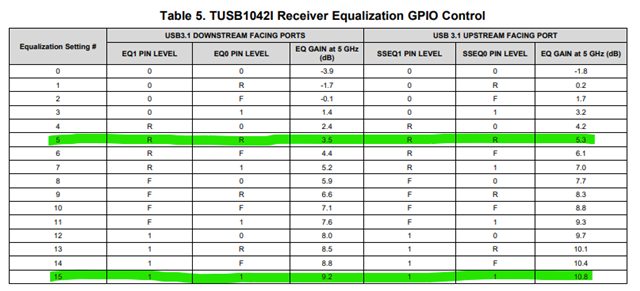Other Parts Discussed in Thread: TUSB1042EVM
Tool/software:
Hi, I'm using the linear redriver/MUX to send a USB3.1 camera signal to a PC. I have USB-C on both ends. The PC is on the SSRX/TX side and we know we will only be able to detect orientation in one direction on the PC side. We can fix that problem with another MUX or a different part, but for now we are just trying to get camera feed. We can get the camera to enumerate and show up briefly but it either drops immediately or after a few frames. The input on the camera side also goes through a MUX on an external board, same part, TUSB1042. I have 100nF capacitors on the TX traces on both sides. Do I need to change the capacitor value? I am in control of the external board and can change those capacitor values if I need to. I also made a layout error and the capacitors on the SSRX/TX side are far from the chip and close to the connector going out. I can rework that to see if it improves the signal.
External board: USB3.1 Camera --> USB3 connector --> TUSB1042 --> USB-C connector
Board in question: USB-C connector --> TUSB1042 --> USB-C --> PC





